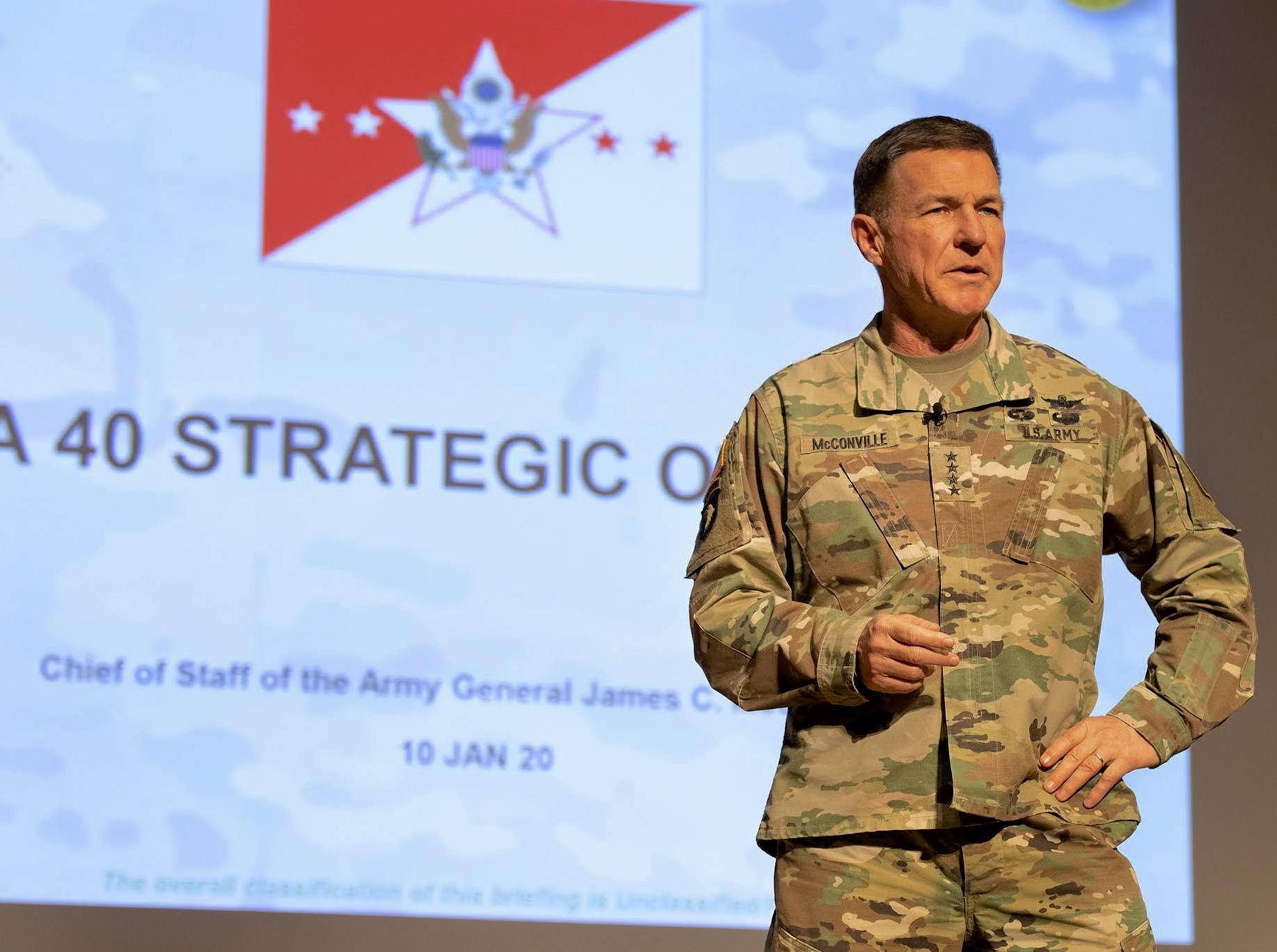
The Army’s new emphasis on long-range strike is designed to offer combatant commanders options in longer campaigns, not take over Marine Corps and Air Force missions, the service’s top general and senior commander in the Pacific said Tuesday.
“We also provide the mass” for more sustained operations that the Marines do not, Army Gen. Paul LaCamera said during a Center for Strategic and International Studies online forum. In his opening remarks, he said the Army’s precision fires can “set conditions for the Air Force and Navy” in larger campaigns. LaCamera noted the Army already provides 51 percent of the other services’ logistics needs in the Indo-Pacific as evidence of its sustainment role in longer operations.
He stressed that the Army and Marine Corps are both training together “and we’re experimenting together” in “how do we work well … in the design of the Indo-Pacific commander” for future operations. Army chief of staff Gen. James McConville said he does not view the Army as competing with the Marine Corps, which is also exploring new concepts of operations. In talks with Commandant Gen. David Berger, McConville added that he understands the Marine Corps’ position of “being an expeditionary force with a maritime focus.”
Answering a question about other equipment needs, McConville said the Army’s work on its Next-Generation Combat Vehicle – which will replace the Bradley Fighting Vehicle to move troops about the battlefield safely – and Future Vertical Lift aircraft for extended range and speed would be especially useful in the Indo-Pacific.
The Navy and Marine Corps have been closely following the Army’s work as the lead service in developing future lift capabilities. He added “we certainly want to look at weight” of the troop-carrying vehicle in how readily it can be deployed in a command that includes the Arctic, jungles, large stretches of ocean and mega-cities with populations in excess of 10 million.
As for competing with the Air Force on long-range, precision strike, McConville said land-based strategic counter-fires and precision strike to hit targets at sea or on the ground “present an enemy with multiple dilemmas” that can be a deterrent.
LaCamera said the idea is to create “a kill web” with all the services, allies and partners for resiliency of command and control, and then “going after the archer” to fight when necessary. He added that “we’ve got to understand what networks are out there” among allies and partners and in what potential areas of operations it could build this resilient “web” for command and control.
“All the services are presuming we’re going to be contested” in land, air, sea, cyber and space in any future great power conflict, McConville said. LaCamera said that translates as operations “will be a lot more deliberate” because communications, GPS and early warning will be disrupted. Force “protection will play a huge role” to include shipping and limited windows of opportunity for access and maneuver. LaCamera said that scenario means commanders can’t be sure “we will be able to keep it open 24/7.”

McConville said, “speed matters, range matters and convergence [of effects]” is important. In the future, the Army needs to modernize “to deliver lethal effects very quickly.”
McConville said the Army is standing up two Multi-Domain Task Forces in the Indo-Pacific and one in Europe, even as it continues experimentation with it as an organization. He emphasized “task force” because it could have “long-range precision effects or they can have air and missile defense or … aviation.”
“We’re getting good feedback from [the] field and what they want [the task force] to do,” he said.
Looking at the impact of the COVID-19 pandemic on the Army in the Pacific, LaCamera said some exercises have been curtailed and there has been “restriction of movement” in and out of the region. The safety precautions add “time to what we we’re doing,” like ensuring all the virus.
At the same time, “we have to trust our partners and allies that they are testing,” and taking the same precautions as the Army.
“For the most part we have adapted,” LaCamera said.
McConville compared the pandemic’s impact to “operating [in] a contaminated environment” that could be similar to one in combat. “You have to adapt,” he said.
Although some have suggested cutting the service’s end-strength to pay for a larger Navy and Air Force, McConville said he “would like to grow [the Army] more” from its present 485,000 active-duty soldiers and more than 700,000 in the Army National Guard and Army Reserve. He understands “we have to spend on readiness” and “transform the force” to compete and deter – and that could affect personnel numbers.





